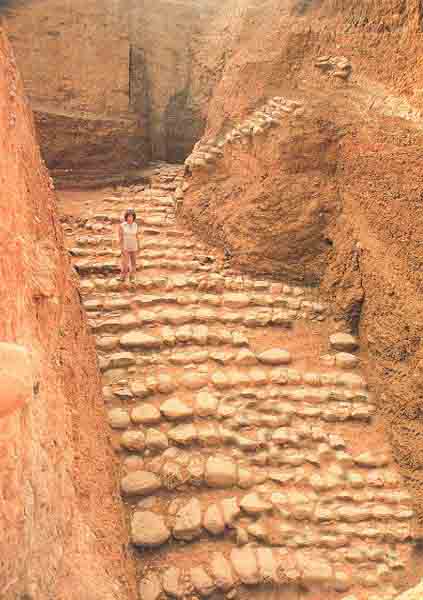Image Details

© Hebrew Union College/Jewish Institute of Religion
Puzzled by the absence of Late Bronze Age fortifications around the 50-acre site, Biran suggests that the Middle Bronze earth ramparts surrounding the city continued to defend the Canaanite city of Laish through the Late Bronze Age and at the time of its conquest by the tribe of Dan.
The gateway complex, part of Laish”s massive city defenses, was composed of three arches: an exterior, or eastern arch, facing outside the city; a center arch; and an interior, or western arch (artist”s conception, inset), facing the interior of the city. The complex was flanked by two mudbrick towers extant to almost 20 feet, nearly the original height. Miraculously, the fragile mudbrick arches and gate complex survived intact through the centuries thanks to protective layers of soil. The Canaanites, for some unknown reason, decided to bury the gate complex by filling the gateway and covering the entire structure with earth, incorporating it into an earthen rampart around the city. Although this gate could no longer serve the inhabitants of the city, other gates were no doubt available. Such a large city would naturally have had more than one gate. As a matter of fact, Biran has found archaeological evidence for another gate at the southern side of the city.
